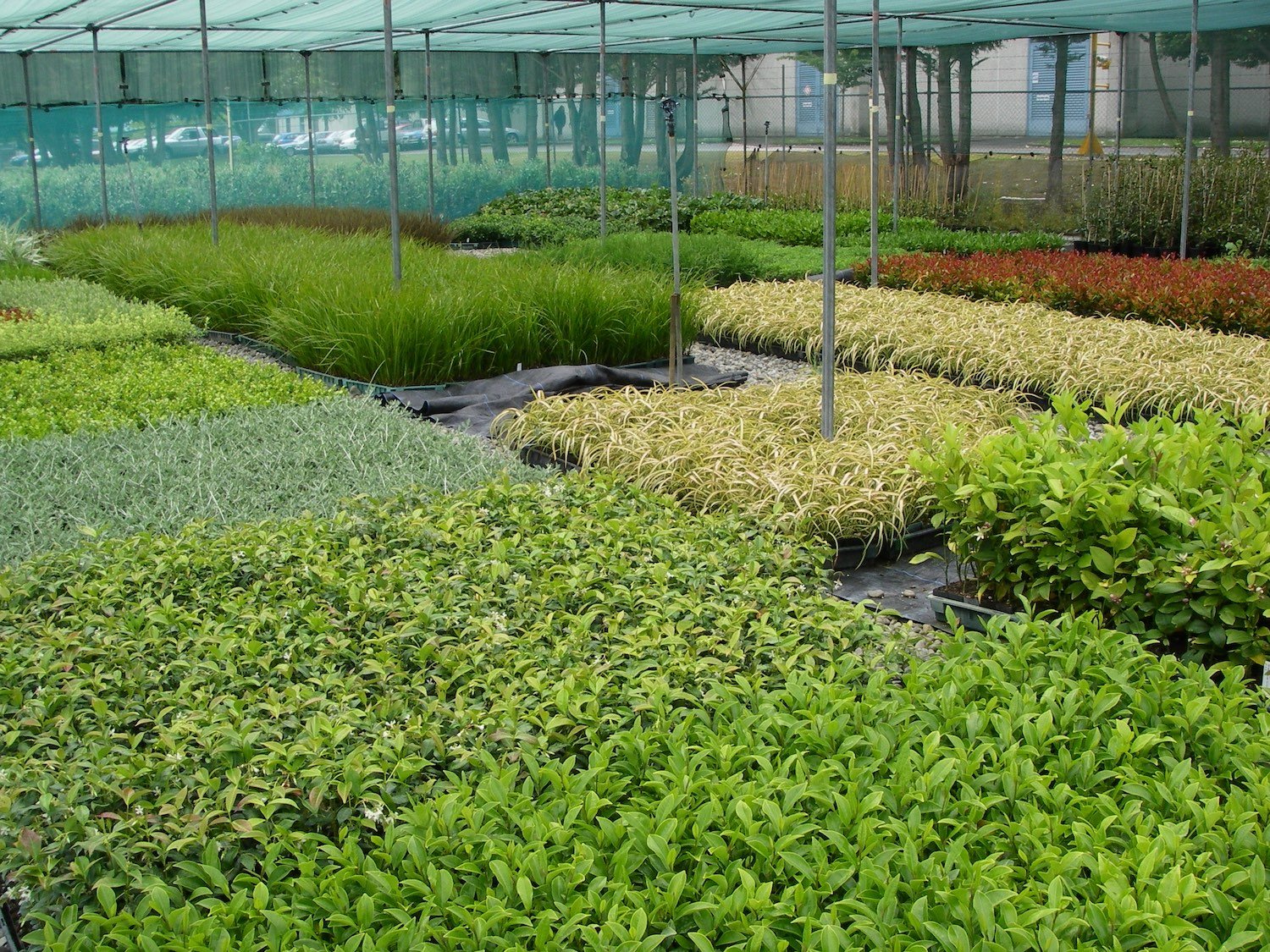
Plant producers are exposed to significant and continual pest and disease threats
Myrtle rust was first discovered in mainland New Zealand in 2017 on a pohutukawa seedling in a Kerikeri plant nursery. It has now been found across the North Island and in upper areas of the South Island.
Why we need Plant Pass
Nurseries are havens for pest and disease establishment. They are usually home to many plant species in a vulnerable, juvenile state growing in moist, warm conditions: an ideal pest incubator.
Therefore it is likely new plant pests will be first found in a nursery. Diseases and pests can then spread rapidly through the plant production supply chain as it is quick, efficient and nationwide.
New Zealand has experienced an increasing number of pest incursions over the last 50 years as international trade and travel have grown. Climate change is also increasing pest and disease risk.
Cinnamon fungus (Phytophthora cinnamomi), the plant parasite Pythium and the Fusarium fungus are ubiquitous; myrtle rust and the pathogen that causes kauri dieback continue to spread; and the red tomato spider mite, fall armyworm and invasive ants are of growing concern.
New Zealand plant producers manage these and other pests, daily.
Taking a proactive approach to biosecurity in the nursery is not only good for business but helps protect Aotearoa’s economy, unique natural environment and way of life.
Plant pests and pathogens present in New Zealand
Phytophthora agathidicida (PA)
Phytophthora agathidicida (PA) is a soil-borne pathogen that attacks kauri trees, causing the fatal condition known as kauri dieback disease. The PA pathogen infects kauri trees through their roots and gradually starves them to death. There is no proven cure for PA pathogen infection, so reducing the spread of the pathogen is critical for protecting healthy kauri.
In August 2022, the National Plan for Kauri introduced strict protocols for the growing and production of kauri. Nurseries that are Plant Pass certified to the Plant Pass Core Standard and the PA (Kauri) Schedule, automatically comply with this rule.
You must follow the rules of the National Plan for Kauri if you are growing kauri. Cases of clear, substantial or continued non-compliance with the rules will be subject to prosecution.
For more information visit: www.kauriprotection.co.nz/national-plan/growing-kauri
Myrtle Rust
Myrtle rust is a serious fungal disease that affects plants in the myrtle family. Some of our most iconic native plants are vulnerable including pōhutukawa, rātā and ramarama. Some exotic species can also get it such as bottlebrush and lilly pily.
Myrtle rust was first reported on a pōhutukawa seedling in a Kerikeri nursery in 2017. It has now been found across the North Island and in the upper half of the South Island.
Plant Pass includes a specific module to help nurseries that grow myrtaceae species manage the disease and control spread.
What to do if you suspect myrtle rust
NZPPI has published a plant production management protocol that sets out the steps to manage myrtle rust in the nursery.
Fall Armyworm
The fall armyworm (Spodoptera frugiperda) is not a worm but a highly invasive moth that threatens plants in its larvae stage.
The larvae may do the damage, but the adult moths ensure the rapid spread of the pest. It arrived in New Zealand around February 2022, likely from Australia. In the 2023/24 season (November to May) it was located in in many regions. The worm can survive on a range of plant species across 76 plant families.
Early detection and strong surveillance are the best defences against the fall armyworm. The Plant Pass core standard helps ensure this type of surveillance is part of a nursery’s biosecurity systems.
What to do if you suspect you’ve found a fall army worm
Visit the Foundation for Arable Research website, which has in-depth advice on what to do, the latest updates on FAW, and where to go for support.
Tomato Red Spider Mite
The tomato red spider mite (Tetranychus evansi) feeds on a wide range of plants in the Solanaceae family.
In large groups, they can mummify plants, wrapping them up in silk webbing, and will feed on the plant until it dies. Known hosts include tomatoes, potatoes, kumara, eggplants, beans, ornamental plants such as roses and orchids and weeds such as shepherd's purse, cleavers, and fat hen.
It was discovered in Auckland in late May 2020. Growers can put biosecurity measures in place to reduce the chances of the mite getting into their plants.
What to do if you suspect you’ve found a tomato red spider mite
Photograph it, catch it (if safe to do so) and report it to the MPI Biosecurity hotline 0800 809 966 or online at www.report.mpi.govt.nz/pest.
Pepino Mosaic Virus
The pepino mosaic virus (PepMV) can cause pepino mosaic disease in tomatoes and some other solanaceous plants including potatoes and eggplants.
PepMV is spread on seed, stalks, and leaves and through plant to plant contact and propagation. It is also transmitted very easily on contaminated tools, hands and clothing. Bumblebees used as pollinators are also known to spread the disease.
It was detected in tomato plants at four Auckland commercial tomato growing greenhouse facilities in April and May 2021. Commercial growers are advised to closely monitor their crops for signs of the virus.
What to do if you suspect pepino mosaic virus:
Photograph it and report it to the MPI Biosecurity hotline 0800 809 966 or online at www.report.mpi.govt.nz/pest.
Granulate Ambrosia Beetle
The granulate ambrosia beetle (Xylosandrus crassiusculus) can damage a wide range of broadleaf trees, including horticultural species. It can also spread damaging fungi.
It has been recorded on more than 100 species in over 40 plant families. It will attack common fruit trees such as avocado, plum, peach, and pear. and common tree species such as oak, eucalyptus and magnolia.
The beetle was detected in Auckland in February 2019. It was found in native and exotic species in seven areas within Auckland.
What to do if you suspect you’ve found a granulate ambrosia beetle:
Photograph it, catch it and report it to the MPI Biosecurity hotline 0800 809 966 or online at www.report.mpi.govt.nz/pest. MPI has published a detailed leaflet on the beetle.
Lilly Pilly Beetle
Adult Lilly pilly beetles and larvae (Paropsides calypso) feed on leaves of Syzygium, a genus of flowering trees and shrubs in the myrtle family (Myrtaceae), including popular hedging plants commonly known as lilly pilly. The beetles can completely strip the foliage of a plant.
Native to Australia, the beetles were first discovered in Helensville, Auckland, in early 2023. They are now believed to be well-established in the area.
What to do if you suspect you’ve found a lilly pilly beetle
Report it to inaturalist.nz. Biosecurity New Zealand put out a fact sheet in January 2024 about the pest and how to detect its damage to plants.
Potato Spindle Tuber Viroid
PSTVd is a pathogen that causes disease and potential loss of production, mainly in potatoes, tomatoes and capsicums. It can also infect ornamental plants, including dahlias, chrysanthemums and petunias.
PSTVd is highly contagious. It can be spread through plant-to-plant contact, transmission on contaminated people, material and tools, from infected seeds, by the aphid Myzus persicae, and from plants already also infected with potato leafroll virus (PLRV).
What to do if you suspect PSTVd
Photograph the affected plant/s and report it to the MPI Biosecurity hotline 0800 809 966 or online at www.report.mpi.govt.nz/pest.
Light brown apple moth
The Light Brown Apple Moth (Epiphyas postvittana) is an Australian native that became established in New Zealand in the 19th century. It’s now found throughout the country. LBAM is highly polyphagous, attacking over 1000 plant species. It’s a serious pest of commercial crops like apples, grapes, citrus, and kiwifruit. As a result, exports can face trade restrictions or require additional treatments. The moth also thrives in urban and natural areas, affecting ornamental and native plants.
Early detection and strong surveillance are the best defences against the LBAM. The Plant Pass core standard helps ensure this type of surveillance is part of a nursery’s biosecurity systems.
What to do if you suspect you’ve found a light brown apple moth or larvae
Report it to inaturalist.nz and look at options for eradication such as pesticides, pheromone traps, organic management and biological control.
Argentine Ant
Argentine ants (Linepithema humile) are one of the world’s most invasive ant species. First found in New Zealand in 1990, they are now widespread in many regions including Auckland, Northland, Waikato and Christchurch. These ants form massive super-colonies that displace native insects and compete with native species for food like nectar and honeydew. They can infest plant pots and growing media, making them a serious risk to nurseries and the wider environment. Once established, they are difficult to remove and require coordinated baiting strategies.
What to do if you suspect you’ve found a light brown apple moth or larvae.
What to do if you suspect you’ve found an argentine ant
Report it to inaturalist.nz. Avoid moving potted plants or other materials until the ants are identified and controlled.
Plant pests and pathogens not yet present in New Zealand but of concern
Tomato brown rugose fruit virus (ToBRFV)
ToBRFV (Tobamovirus fructirugosum) was detected in tomato nurseries in South Australia in July 2024. In August that year MPI placed import restrictions on tomato seed and fresh tomato imports from Australia. ToBRFV has been of global concern since its discovery in 2015 in the Middle East. It affects tomatoes, capsicums, petunias and some other solanaceous plants causing fruit discolouration, deformities and irregular maturation.
What to do if you suspect ToBRFV
If you find a tomato plant with all or most of the symptoms photograph it, contain it securely away from other plants and report it to the MPI Biosecurity hotline on 0800 809 966. TomatoesNZ has advice for growers on how to detect and manage the virus.
Bacterial leaf scorch
Bacterial leaf scorch (Xylella fastidiosa) is a disease of many different names because the bacterium can infect many plants, both natives and important crops. It also goes by Pierce's disease in grapes, olive quick decline syndrome, and citrus variegated chlorosis. We don't know the full scale of the damage it could do if it got to New Zealand but overseas it has devastated grape, olive and citrus industries. Xylella is spread locally by infected insects. It could travel internationally on infected nursery stock so MPI has strict measures in place to limit the chances of infected nursery stock or insects coming through the border.
What to do if you suspect Xyella Fastidiosa
If you're an experienced grower and have found unusual signs of leaf scorch on host plants, photograph it and report it to the MPI Biosecurity hotline on 0800 809 966 or online at www.report.mpi.govt.nz/pest.













